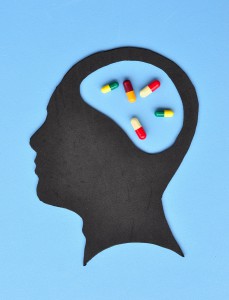ADHD Study: Reducing the Need for High Medication Doses with Behavior Therapy
 Medication treatment and behavior therapy are both considered effective treatments for ADHD; the combination of these treatments is generally regarded as an ideal approach for many children. However, in the Multimodal Treatment Study of ADHD (MTA Study), the largest ADHD treatment study ever conducted, the benefit of combined treatment relative to medication treatment alone — while significant for some outcome measures — was not especially robust. This has led some professionals to question whether behavior therapy is necessary when a child is being effectively treated with medication, i.e., will behavior therapy make a sufficient different to be worthwhile? (For a review of the initial set of findings from the MTA study.
Medication treatment and behavior therapy are both considered effective treatments for ADHD; the combination of these treatments is generally regarded as an ideal approach for many children. However, in the Multimodal Treatment Study of ADHD (MTA Study), the largest ADHD treatment study ever conducted, the benefit of combined treatment relative to medication treatment alone — while significant for some outcome measures — was not especially robust. This has led some professionals to question whether behavior therapy is necessary when a child is being effectively treated with medication, i.e., will behavior therapy make a sufficient different to be worthwhile? (For a review of the initial set of findings from the MTA study.
One limitation of most prior studies examining combined treatment — MTA included — is that the incremental benefits of behavior therapy have been examined in the context of an optimized medication dose. For example, each child in the MTA Study began medication treatment with an intensive placebo-controlled trial to determine his or her most effective dose. Thus, the benefits of adding behavioral treatment to medication was evaluated in the context of an optimized medication regime. Generally speaking, the incremental benefits of behavior treatment when evaluated in this context are modest at best.
However, medication treatment in community settings is rarely delivered in ways to optimize benefits. And, an entirely different but important question is whether combining behavior therapy and medication can significantly reduce the dose of medication required to attain effective symptom management. This would be an important result because sustained stimulant medication treatment may be associated with growth suppression. Lower doses may reduce growth suppression effects, be associated with reduced side effects overall, and be more palatable to families concerned about medicating their child.
A study recently published online in the Journal of Abnormal Child Psychology [Pelham et al., (2014). A dose-ranging study of behavioral and pharmacological treatment in social settings for children with ADHD, DOI 10,1007/s10802-013‑9843‑8 ] takes a careful look at this important issue. Participants were 48 5–12 year-old children with ADHD who were participating in an intensive summer treatment program (STP). The STP ran for 9 hours/day and lasted 9 weeks. Children spent 2 hours each day in academic activities and the rest of each day in group recreational activities similar to a regular summer day camp.
Treatments
Medication — During the STP, children received 3 different dose of stimulant medication, i.e., low, medium and high, along with a placebo. The medication was a short-acting methylphenidate (the generic form of ritalin) and was administered 3 times each day. Medication dose was switched daily and STP staff were blind to what the child received each day.
Behavior Therapy — Behavior therapy was provided in low intensity and high intensity variants. In both cases, treatment included a point system to promote desired behavior, clearly stated rules and expectations, social skills and social problem solving training, social praise and reinforcement, athletic skills training, and the use of daily and weekly rewards.
The main difference was that in the low intensity condition, each element was modified so that it required less effort to provide. For example, in the high intensity condition, children earned and lost points throughout the day based on their behavior. In the low intensity condition, children received feedback on their behavior but did not gain or lose points. Similarly, although the content of social skills lessons was similar, in the low intensity condition, social skills feedback was not incorporated into daily activities and social problem solving training was not provided. Rewards for good behavior were provided on a weekly rather than daily basis.
Study Design
The basic design of the study varied medication dose — placebo, low, medium, high — with behavioral treatment — none, low intensity, high intensity — so that children’s behavior in each treatment combination could be assessed. Thus, each child was evaluated during all possible combinations of medication dose and behavior therapy. This enabled the researchers to determine, for example, how a low dose of medication combined with low intensity behavior therapy compared to a high dose of medication alone.
Outcome measures
Assessments of children’s behavior during each combination of medication and behavior therapy was provided by counselors. Counselors were blind to medication status but, because they delivered the behavioral treatment, were aware of which behavioral condition the child was in, i.e., no, low intensity, high intensity.
The main outcome rating was derived from the daily point system employed in the STP. Through this system, daily measures were derived for each child’s level of rule violations, noncompliance, interrupting, serious conduct problems, and negative verbalizations. In addition, counselors completed a daily rating of ADHD symptoms, overall degree of impairment, and medication side effects.
Results
As expected, medication treatment in the absence of behavior modification was associated with significant improvements in children’s behavior. And, as dose increased, so did the benefits — on average — to children’s behavior.
Behavior therapy in the absence of medication treatment was also associated with significant behavioral improvement across a wise range of measures. In general, high intensity behavior management was associated with greater behavioral improvements and ADHD symptom reductions than low intensity behavior management.
The really interesting findings from this study concern the combination of medication and behavioral treatment. On virtually all measures, adding high intensity behavior management to the lowest medication dose of medication yielded comparable improvements to those produced by the high dose medication alone. For a number of measures, even low intensity behavior management combined with the lowest medication dose was as effective as high dose medication.
To be concrete, results suggested that a typical child with ADHD could be treated with the equivalent of 5 mg of methylphenidate 2X/day if he/she concurrenlty received moderate to high intensity behavior therapy. Without behavior therapy, the same child would require a 20 mg dose 2X/day to attain comparable benefits. Thus, the daily reduction in methylphenidate would be 30 mg/day. One reason this may be important is that the appetite suppression effects observed in the current study increased substantially with increasing dose — the percentage of their lunch that children ate was 81%, 73%, 59%, and 45% on placebo, low, medium, and high medication doses respectively.
It is also important to note that for several of the outcomes, adding either low or high intensity behavior therapy yielded incremental improvements at every dose of medication; the effect size for these incremental gains were frequently large. Similarly, adding medication to either variant of behavior therapy was associated with significant incremental gains at each dose.
Summary and Implications
Results from this study provide a compelling demonstration that adding behavior therapy to medication treatment could enable most children to be maintained on significantly lower doses of medication than would otherwise be the case. This could potentially reduce the appetite reduction and perhaps growth suppression that can be associated with prolonged stimulant treatment; it could also be more comfortable for many parents who have concerns about medication treatment for their child.
While this study highlights the viability of this approach, it is worth noting that current practice is generally not oriented in this way. Typically, when children begin medication treatment for ADHD, the clinician’s goal is to find a dose that yields the greatest benefits. The question of whether similar benefits could be attained through a combination of less medication and behavior therapy is not typically addressed.
There are limitations to this study that should be noted. First, even the ‘low intensity’ behavior treatment provided had multiple components and could be challenging for families to sustain over time. Second, the study occurred in the context of an intensive summer treatment program, a very different context from where children spend their daily lives. And, treatment results were evaluated over only a 9‑week period, with the different combination of medication dose and behavioral treatment intensity lasting for much shorter times. Thus, the sustainability of the effects, and the generalization to more typical environments remains to be demonstrated.
These limitations not withstanding, a basic point demonstrated by this study is clear and straight forward — medication doses can be decreased when such treatment is combined with well executed behavior therapy. This may be particularly valuable when children are unable to tolerate higher medication doses and where there are concerns related to appetite reduction and growth suppression. By the same token, lower doses of medication can reduce the intensity of behavioral treatment required to obtain good effects. Such complementary findings speak to the value of combined treatment for many children with ADHD.
 – Dr. David Rabiner is a child clinical psychologist and Director of Undergraduate Studies in the Department of Psychology and Neuroscience at Duke University. He publishes Attention Research Update, an online newsletter that helps parents, professionals, and educators keep up with the latest research on ADHD, and teaches the online course How to Navigate Conventional and Complementary ADHD Treatments for Healthy Brain Development.
– Dr. David Rabiner is a child clinical psychologist and Director of Undergraduate Studies in the Department of Psychology and Neuroscience at Duke University. He publishes Attention Research Update, an online newsletter that helps parents, professionals, and educators keep up with the latest research on ADHD, and teaches the online course How to Navigate Conventional and Complementary ADHD Treatments for Healthy Brain Development.
Previous articles by Dr. Rabiner:


